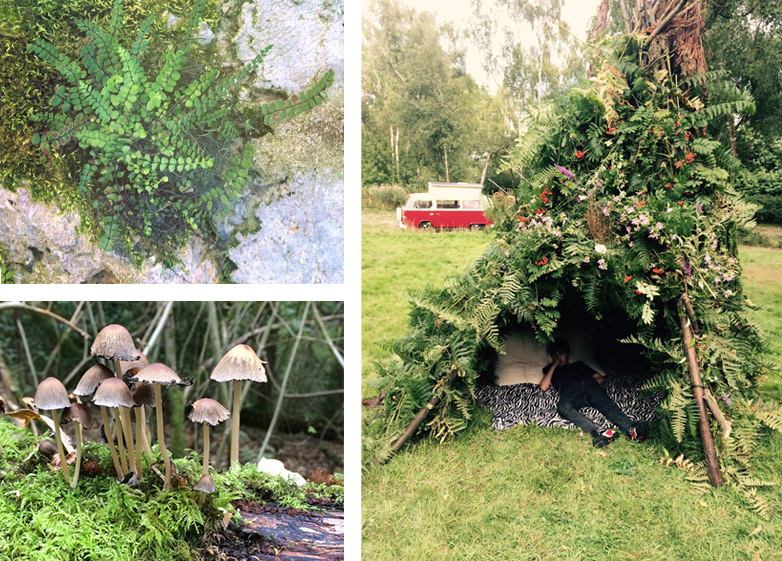Foraging

When I was growing up my mum took us on foraging trips where we’d pick Chanterelle mushrooms and edible leaves like wild garlic, Samphire seaweed. We picked muscles oysters and caught crabs. We’d often make dens (like the amazing one we made in the picture above) and build fires and sit around eating our foraged food cooked up by mum into a beautiful plate of delicisouness. These are very fond memories to me as I love messing about outside, climbing trees and collecting goodies AND I love eating great food. It makes a lot of sense. So I have decided to expand my knowledge on foraging.
Foraging means taking your place in the landscape in a way that has been only recently forgotten as a normal human way of life. For most of our time on earth, we humans, like most other species, spent our days foraging, becoming intimately acquainted with the land and the life forms it supports. Such intimacy has been disrupted by our modern culture of consumption and convenience and we haven’t learned to read the landscape for signs of the presence of edible plants. Compared to most western lifestyles, foraging is a bit out of the ordinary. In terms of our genetic make-up and our history, though, it is as normal as breathing.
Reading the landscape involves most of your senses which in time, becomes an automatic survey of your surroundings as you move through them. You are looking for signs, cues and the definite marks of various species. For example the perception of dampness in the air on your cheek as you move from one part of a woodland to another that indicates increased humidity and a greater likelihood of finding mushrooms.
Foraging is essentially tied to the seasons. By early summer, the edible leaves and stems of many plants harvested in spring are past the point of greatest usefulness as the plants reach their flowering and fruiting stages. On the other hand, summer is also a peak time for flowers and many of the strongest flavours develop during this season.
So what’s on offer during these months? You can check out the hedgerows for blackberries, cherry plums and wild damsons. Along with hedgerows, the edges of fields and woodland are great for elderberries, rosehips and crab apples as well as blackberries. It is also a pleasure to hunt for seaweed along the coast on a hot day, when you don’t even mind slipping on the rocks and falling into the water.
